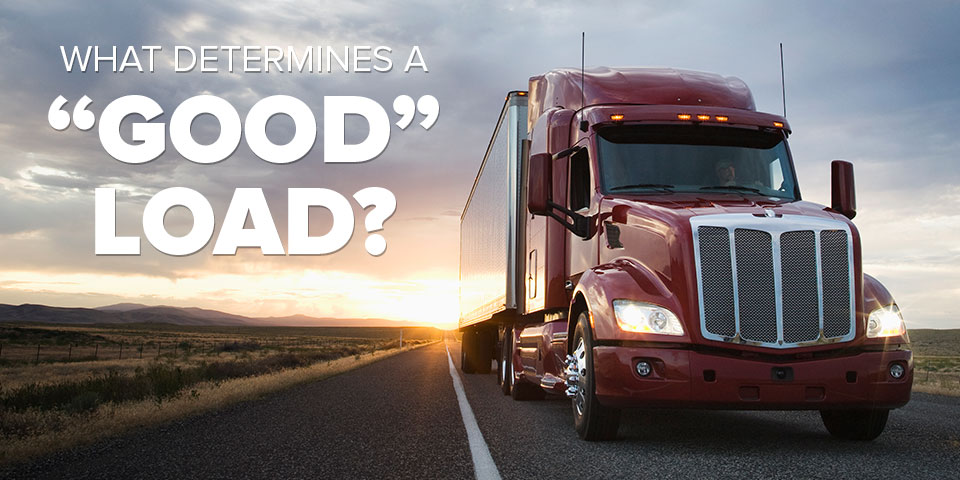In The News

What Determines a 'Good' Load?
A key to success in expedited trucking is learning which type of loads to accept--and which ones to pass on. A “good” load will pay you well and put you in position to get your next job with minimal wait times or deadhead miles, whereas “bad” freight can tie up your time and cost you more money than you earn.
But if you’re new to this business, it could take several weeks or months of trial and error before you learn the ropes and figure out what defines a “good” load for you.
So, to help you shorten that learning curve, EO recently spoke with expediters Greg Huggins, a solo owner-operator leased to Landstar, and Stephen Halsted and Sandy Goche, team owner-operators leased to V3 Transportation, to get their advice.
While there will be unique aspects to your situation, here are three factors that apply to many scenarios to help you choose “good” loads more consistently.
#1. Area
Will the freight take you to a location where you’ll be able to get another load without having to sit very long or deadhead far?
The answer to this question may not be immediately obvious and often depends on which carrier you’re lease to and whether that carrier does a lot of business in an area, says Huggins.
“if your carrier has loads in a city, you’ll probably be able to get a load out. But if the carrier doesn’t do a lot of business there, it's a black hole,” says Huggins. “I took a load to one city, and I ended up having to deadhead out after a few days. And that’s the challenge: You don't want to wait too long [to get your next load], but you also don't want to leave too early and miss an opportunity. So, I had to figure out that balance point through experience. And today, I just don't go to that city.”
According to Halsted, there are some cases when it’s ok to deliver a load to a “bad” freight area if you negotiate with your carrier to help compensate you for empty miles and other factors that could make the deal worth your while.
#2. Compensation
Will you make enough money on this load to cover your costs and earn sufficient profit?
The answer to this question is unique to your situation. That’s because a load that isn’t a good fit for one expediter could be highly profitable for another driver, depending on their compensation plan and operational costs.
But an important point to keep in mind is to determine what your minimum criteria is for accepting a load.
For example, Halsted and Goche say that they look for a certain number of miles before they say “Yes” to a load. And that’s largely because they’re paid by the mile and not by percentage of freight.
Huggins says that he will accept shorter distance loads but only when they cover a minimum daily rate.
“A short load has to pay a minimum for the day because once you start your clock on the logbook, you're going to burn up hours, especially as a solo driver,” says Huggins. “I can't just swap drivers because I'm out of hours. If you take that short load over to the airport and it's only 20 miles, it better pay for the whole day because your clock has started. Otherwise, you get a call in the afternoon for another load, but you can’t run because your hours are gone. So, make sure the first load at least covers that day because it may just kill the rest of the day.”
#3. Environment
Sometimes the money and location for a load can look good, but a toxic work environment at the warehouse where you’re to deliver the freight might lead you to say No.
At least, that has been the case for Halsted and Goche.
“There are certain customers out there that we will not go into because we've learned they are bad customers, bad shippers. And it all goes back to the way they treat us as the drivers,” says Halsted. “We were at one shipper where we had to sit for 13 hours without access to their bathroom facilities. They don't even treat you like human beings. They treat you like they stepped in something and they're trying to get it off their shoe.”
So how do you handle those situations?
“When you get a call and dispatch says, ‘Well, we've got something going into A-B-C town,’ and you say ask, ‘Is it X-Y-Z company,” and they say ‘Yes,’ we automatically tell them no because we're not going to go in and get treated badly by a shipper just to run their freight.”
The Bottom Line
When it comes to determining a “good” load, there’s not a one-size-fits-all checklist. But these three points at least give you a starting point for organizing your thoughts and developing your own framework for deciding which types of freight are best for your business.
